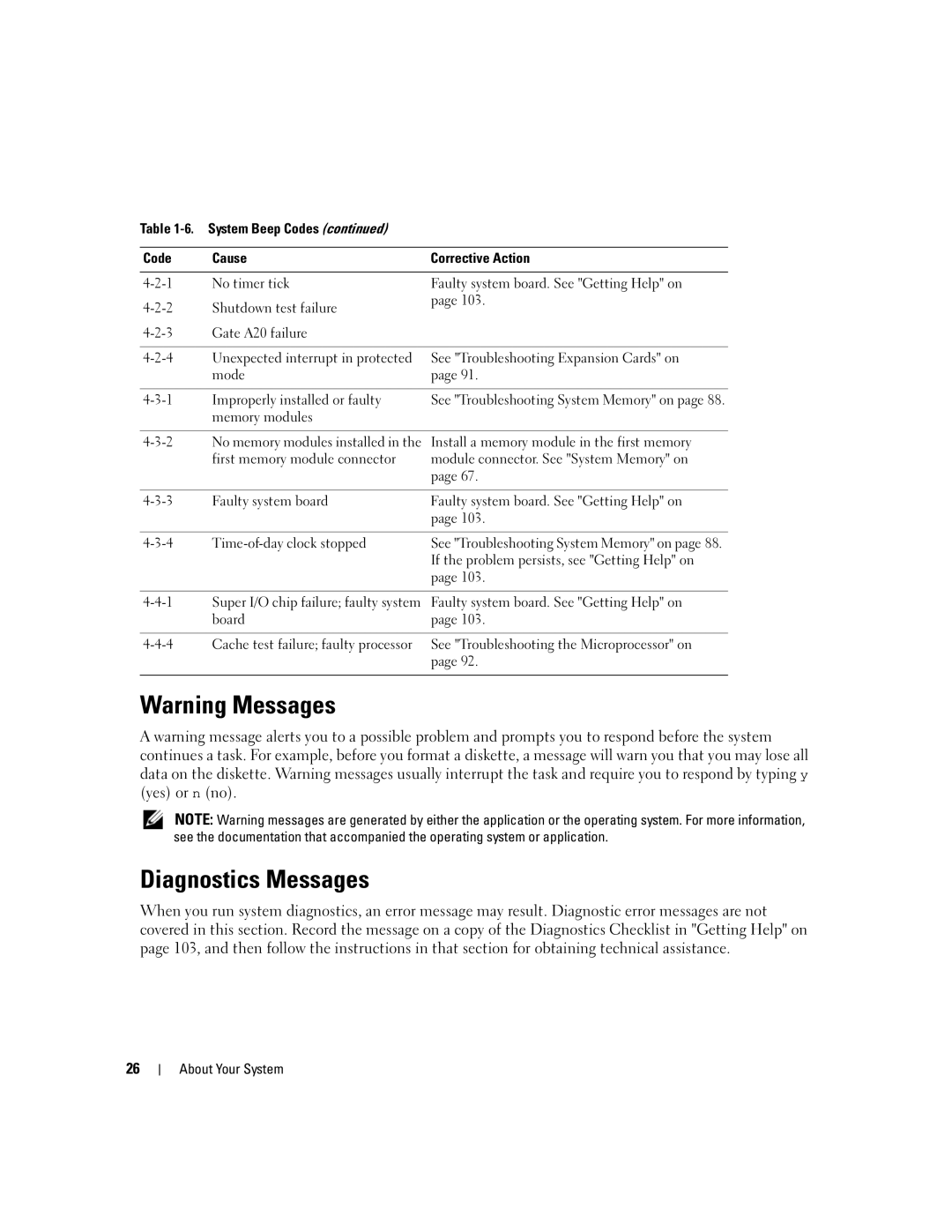
Table
Code | Cause | Corrective Action |
|
|
|
No timer tick | Faulty system board. See "Getting Help" on | |
Shutdown test failure | page 103. | |
| ||
Gate A20 failure |
| |
|
|
|
Unexpected interrupt in protected | See "Troubleshooting Expansion Cards" on | |
| mode | page 91. |
|
|
|
Improperly installed or faulty | See "Troubleshooting System Memory" on page 88. | |
| memory modules |
|
Install a memory module in the first memory module connector. See "System Memory" on page 67.
Faulty system board | Faulty system board. See "Getting Help" on | |
|
| page 103. |
|
|
|
See "Troubleshooting System Memory" on page 88. | ||
|
| If the problem persists, see "Getting Help" on |
|
| page 103. |
Faulty system board. See "Getting Help" on page 103.
Cache test failure; faulty processor See "Troubleshooting the Microprocessor" on | |
| page 92. |
|
|
Warning Messages
A warning message alerts you to a possible problem and prompts you to respond before the system continues a task. For example, before you format a diskette, a message will warn you that you may lose all data on the diskette. Warning messages usually interrupt the task and require you to respond by typing y (yes) or n (no).
NOTE: Warning messages are generated by either the application or the operating system. For more information, see the documentation that accompanied the operating system or application.
Diagnostics Messages
When you run system diagnostics, an error message may result. Diagnostic error messages are not covered in this section. Record the message on a copy of the Diagnostics Checklist in "Getting Help" on page 103, and then follow the instructions in that section for obtaining technical assistance.
26
